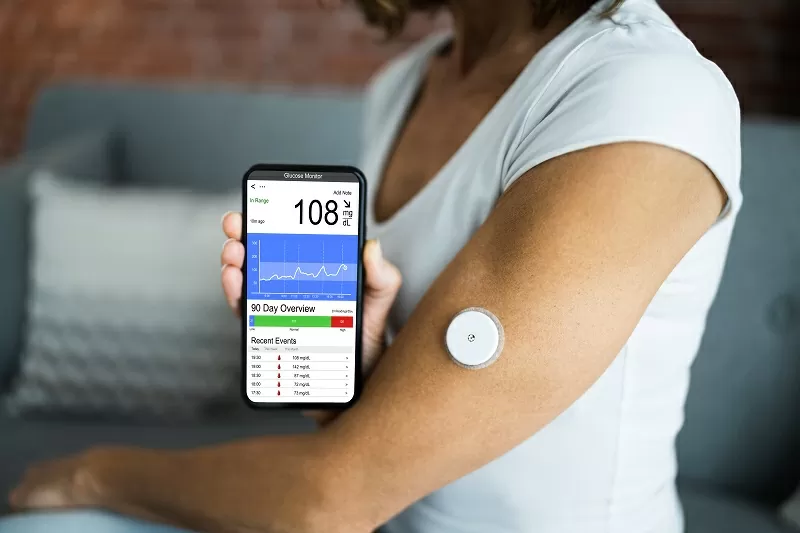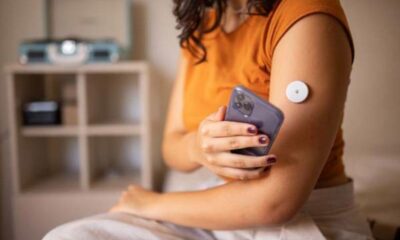Managing diabetes effectively requires constant attention to blood sugar levels, diet, and lifestyle choices. Traditionally, individuals with diabetes have relied on finger-prick tests to check blood glucose levels, a method that, while effective, is often inconvenient and uncomfortable. However, continuous glucose monitoring (CGM) is revolutionizing the way people manage diabetes by offering real-time, 24/7 tracking of glucose levels. This technology not only simplifies diabetes management but also provides valuable insights that can help individuals make better decisions about their health.
What is Continuous Glucose Monitoring?
Continuous glucose monitoring (CGM) is a system that automatically tracks glucose levels throughout the day and night. Unlike traditional glucose meters that require a finger-prick test to measure blood sugar at specific moments, CGM devices provide continuous real-time data on glucose levels. This allows for a more comprehensive understanding of how food, exercise, medication, and other factors affect blood sugar over time.
A CGM system consists of three main components:
- Sensor: The sensor is a small device that is inserted just beneath the skin, typically on the abdomen or arm. It measures glucose levels in the interstitial fluid (the fluid between cells) every few minutes.
- Transmitter: The sensor is connected to a transmitter, which sends glucose data wirelessly to a receiver, such as a smartphone, smartwatch, or dedicated monitoring device.
- Receiver: The receiver displays glucose levels in real-time, allowing the user to monitor their blood sugar at any given moment. Many CGMs also include alarms that alert the user when their glucose levels are too high or too low, enabling prompt action.
How CGM Streamlines Diabetes Management
Real-Time Glucose Monitoring
One of the most significant advantages of CGM is the ability to track glucose levels in real-time. Instead of relying on intermittent finger-prick tests, CGM provides a continuous flow of data. This allows individuals to see glucose trends over time, identify patterns, and make more informed decisions about their health.For example, a person can see how their blood sugar responds to specific meals or activities and adjust their insulin dose or food intake accordingly. This level of insight is invaluable in managing diabetes more effectively and reducing the risk of dangerous high or low blood sugar levels.
Fewer Finger Pricks
Traditional diabetes management requires multiple finger-prick tests throughout the day, which can be painful and inconvenient. CGM significantly reduces the need for these tests, as it provides continuous data without the need for frequent manual checks. Although occasional finger-prick tests may still be necessary to calibrate the CGM device or verify readings, the frequency is much lower than with traditional methods.This convenience can be a game-changer for people with diabetes, especially children and those who find frequent testing burdensome. It allows for better adherence to glucose monitoring routines without the discomfort and hassle of constant finger-pricks.
Improved Blood Sugar Control
Studies have shown that CGM users experience better blood sugar control compared to those using traditional glucose meters. This is because CGM provides more comprehensive data, enabling individuals to spot patterns and trends in their glucose levels that might be missed with intermittent testing. Continuous monitoring helps individuals identify what triggers blood sugar spikes or drops, whether it’s a certain food, stress, exercise, or medications. By addressing these triggers, users can adjust their insulin, food intake, or activity level to maintain more stable blood sugar levels. Over time, this can lead to improved HbA1c levels (a measure of average blood sugar over the past three months) and a reduced risk of diabetes-related complications such as heart disease, kidney damage, and nerve issues.
Alerts for High and Low Glucose Levels
One of the most valuable features of CGM is its ability to alert users when their blood sugar levels are too high (hyperglycemia) or too low (hypoglycemia). These real-time alerts can be life-saving, as they allow individuals to take immediate action to correct their glucose levels before they become dangerous.For example, if a person’s blood sugar drops to a critically low level while they are sleeping, the CGM will send an alert to wake them up, prompting them to eat something to raise their blood sugar. Similarly, if blood sugar spikes after a meal, the CGM can alert the user to take insulin or make other adjustments. These alerts provide an added layer of safety and reassurance, particularly for people with type 1 diabetes or those prone to severe hypoglycemia.
Data-Driven Insights for Healthcare Providers
CGM systems not only benefit individuals managing their diabetes but also provide valuable data for healthcare providers. Many CGM devices store glucose data that can be shared with doctors or diabetes care teams, offering a detailed view of the patient’s blood sugar trends over time. This allows healthcare providers to make more informed decisions about treatment plans, insulin doses, and other interventions.By reviewing CGM data, doctors can identify patterns in blood sugar fluctuations and adjust medications or recommend lifestyle changes accordingly. This personalized approach leads to better outcomes, as treatment is based on real-world data rather than just occasional blood sugar readings from office visits or finger-prick tests.
Greater Flexibility and Freedom
CGM provides individuals with more flexibility and freedom in their daily lives. Traditional diabetes management often requires careful planning around meals, exercise, and insulin doses, with frequent blood sugar checks to ensure levels remain stable. CGM simplifies this process by providing continuous data and alerts, allowing individuals to respond to changes in blood sugar in real-time without constant manual testing. This means people with diabetes can enjoy greater spontaneity in their activities, whether it’s trying new foods, engaging in physical exercise, or traveling. With the support of CGM, they can feel more confident in their ability to manage blood sugar fluctuations as they happen, rather than being caught off guard by sudden highs or lows.
Who Can Benefit from Continuous Glucose Monitoring?
While CGM is most commonly used by people with type 1 diabetes, individuals with type 2 diabetes can also benefit from the technology. In particular, CGM may be helpful for:
- People with fluctuating blood sugar levels: Those who experience frequent highs and lows in their blood sugar can use CGM to gain better control and prevent dangerous episodes.
- People with hypoglycemia unawareness: Some individuals with diabetes may not recognize the symptoms of low blood sugar, such as dizziness, confusion, or sweating. CGM provides real-time alerts to warn of low glucose levels, allowing users to take action before symptoms worsen.
- Children with diabetes: Managing diabetes in children can be challenging, especially for parents trying to monitor blood sugar levels. CGM simplifies the process by providing continuous data and allowing parents to monitor their child’s glucose levels remotely through a smartphone app.
- People with busy lifestyles: For those who find it difficult to test their blood sugar frequently due to work, travel, or other commitments, CGM offers a convenient solution by providing 24/7 monitoring without the need for frequent finger-pricks.
Types of Continuous Glucose Monitors
Several CGM systems are available on the market, each offering different features. Some of the most popular options include:
- Dexcom G6: One of the most widely used CGM systems, the Dexcom G6 offers real-time glucose monitoring, customizable alerts, and data sharing with multiple devices. It does not require finger-prick calibration, making it a convenient option for users.
- Freestyle Libre: The Freestyle Libre provides continuous glucose monitoring with a sensor that can be worn for up to 14 days. While it requires the user to scan the sensor to view glucose readings, it offers a more affordable option compared to other CGMs.
- Medtronic Guardian Connect: This CGM system is often used in conjunction with insulin pumps for individuals with type 1 diabetes. It provides real-time glucose monitoring and predictive alerts to warn users of potential high or low blood sugar levels.
Each CGM system has its own unique features, and the best choice depends on individual needs, preferences, and budget.
Conclusion
Continuous glucose monitoring is transforming diabetes management by offering real-time, continuous tracking of glucose levels. This technology streamlines diabetes care, reducing the need for finger-prick tests, improving blood sugar control, and providing valuable insights for both individuals and healthcare providers. With CGM, people with diabetes can enjoy greater flexibility, freedom, and peace of mind, knowing they have the tools to manage their condition effectively.
As CGM technology continues to evolve, it is likely to become even more accessible and integrated into diabetes care, further improving outcomes and quality of life for those living with diabetes. Whether you are managing type 1 or type 2 diabetes, continuous glucose monitoring can provide the support and data needed to take control of your health and live with confidence.

 Diabetology2 weeks ago
Diabetology2 weeks ago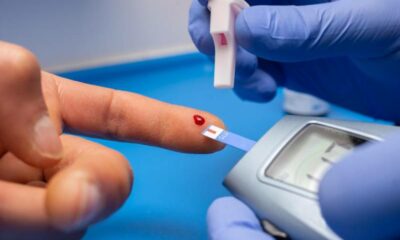
 Diabetology7 days ago
Diabetology7 days ago
 Diabetology5 days ago
Diabetology5 days ago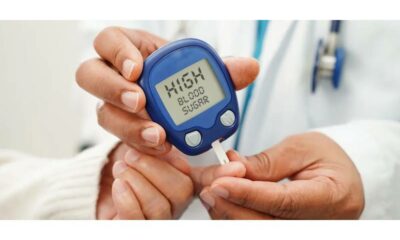
 Diabetology6 days ago
Diabetology6 days ago
 Diabetology6 days ago
Diabetology6 days ago
 Diabetology3 days ago
Diabetology3 days ago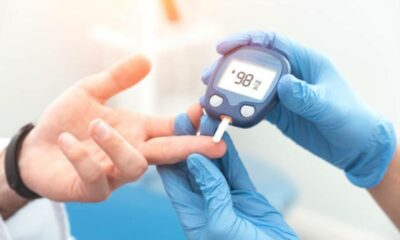
 Diabetology3 days ago
Diabetology3 days ago
 Diabetology23 hours ago
Diabetology23 hours ago
